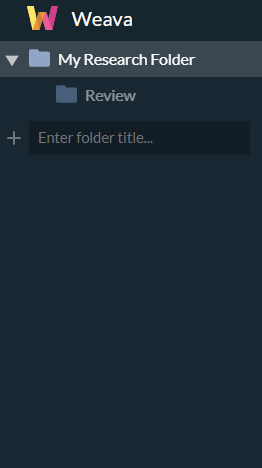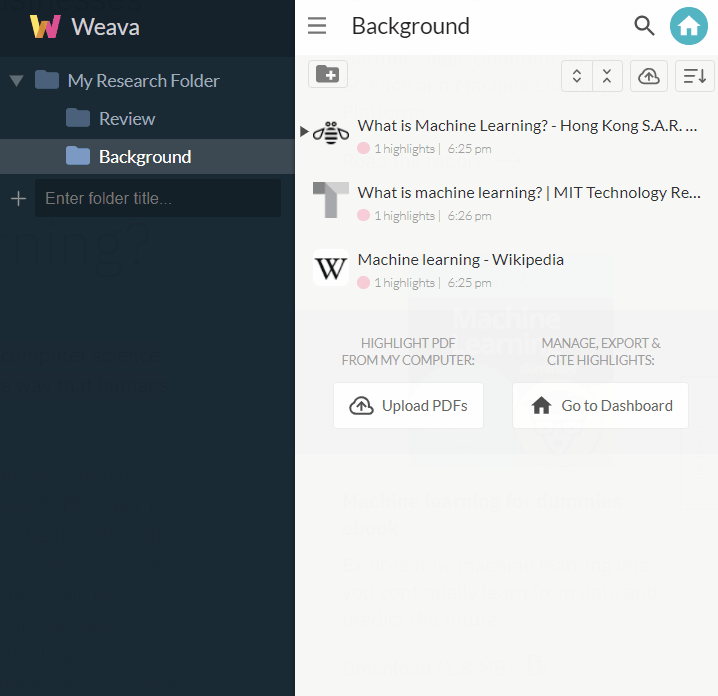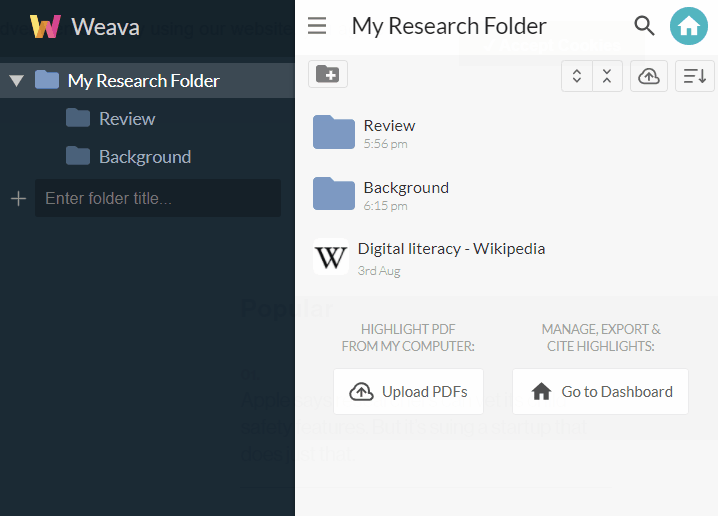Welcome to the second article of Weava’s Academic Series!
This Academic Series is a guide to help you confidently tackle your research and paper assignments. We recommend you to read our previous article on How to Plan Your Academic Essay for more tips.
What is Academic Reading?
Academic reading is a crucial part of university learning. Whatever your field of study, you will likely have to read a range of materials, from textbooks to research papers and journal articles. Many courses also come with recommended reading lists.
Knowing how to manage your reading can help you make the most out of the available materials and participate in class discussions. But how do you condense large amounts of texts into useful information? And how can you improve knowledge retention when reading complex texts? Weava is a powerful tool in this case. Read this guide to learn how to use the different Weava features to manage your readings and read effectively.
Determine a Purpose
In order to read actively, it is important to have a clear goal in mind. This will help you identify information that is important and should be retained. As a result, you will be able to pay attention to parts of the text that are most relevant.
Many disciplines will require you to do some reading on your own. Knowing why you are reading a particular text will help you set a goal and ensure the time spent reading is beneficial to your learning process. Therefore, you need to think about and determine a clear purpose before you get started.
Consider determining these purposes for your reading:
- To gain general background knowledge: Broad (scope) and light reading, rather than in-depth reading and analysis.
- To answer a specific question (for an assignment): In-depth and focused reading of materials relevant to the research question/essay topic
- To fill in knowledge gaps after a lecture: Focused and somewhat in-depth, only certain parts of the reading materials (e.g., textbook subtopic within a chapter).
Many disciplines will require you to do some reading on your own. Knowing why you are reading a particular text will help you set a goal and ensure the time spent reading is beneficial to your learning process. Therefore, you need to think about and determine a clear purpose before you get started.
Consider determining these purposes for your reading:
- To gain general background knowledge: Broad (scope) and light reading, rather than in-depth reading and analysis.
- To answer a specific question (for an assignment): In-depth and focused reading of materials relevant to the research question/essay topic
- To fill in knowledge gaps after a lecture: Focused and somewhat in-depth, only certain parts of the reading materials (e.g., textbook subtopic within a chapter).
Be Selective
Given the limited time you have and the abundance of accessible information online, it is also important for you to be selective about what you read. This means that you need to identify information sources that are credible, useful, and relevant to you.
Use the indicators below to check if your source is credible:
- Publication date – is it recent and relevant?
- Author’s name and publisher information – is it published by educational institutions, academic journals, or renowned press?
- Does the article provide a useful literature review and an editor’s note?
- Check the examples, chats, diagrams etc. – are they backed by proper research and analysis?
Consider the tips below to select useful articles from journals or research papers:
- Before jumping into the content, read the executive summary of the abstract first to gauge the relevance of the article to your purpose.
- Look through the table of contents to identify the most important sections for your reading.
- Pick a topic that you are familiar with and read that part of the book first to assess the relevance of the book and the author’s approach.
Retain the Knowledge
While you are reading, it is very important to take notes and to organize your research to retain the knowledge. But how do you efficiently organize the key points and your notes when you are reading from multiple papers, articles and journals from different sources?
Weava is a tool that can help you read efficiently. With Weava, you can highlight on websites and PDFs, annotate on your highlights, organize them in your customized folders, and collaborate with your peers in one place. Learn the tips below:
1. Categorize the purposes of your study and research in different highlight colors.

2. After highlighting multiple information sources, review your highlights and notes from your sidebar or dashboard instead of re-reading the whole materials.

3. Invite your peers to collaborate. Be creative to use Weava’s features – for example, assign one color for each contributor to take notes or questions.

Upload PDF Lecture Slides on Weava
Did you know that you can also upload your local PDFs on Weava to start highlighting and annotating? We recommend you to upload your lecture slides to highlight difficult concepts and note your questions and comments to organize your reading.
An additional tip from us is to have both your lecture slides and other relevant online reading materials in the same Weava folder for easier cross-references.
Weava for Students
Weava is a great tool for students as it helps you to easily retain information and stay organized on the web. Weava is currently used by hundreds of thousands of users worldwide in their academic journeys. If you haven’t already, consider downloading the Weava Chrome extension today.
For More Tips, We Recommend You Visit…
Academic Series 1. How to Plan Your Academic Essay
Weava Resources – How to Highlight with Weava
Weava Resources – How to Annotate with Weava
Weava Resources – How to Organize with Weava
(n.d.). Managing academic reading – Reading and making notes – LibGuides at University of Reading. Retrieved from https://libguides.reading.ac.uk/reading/reading


